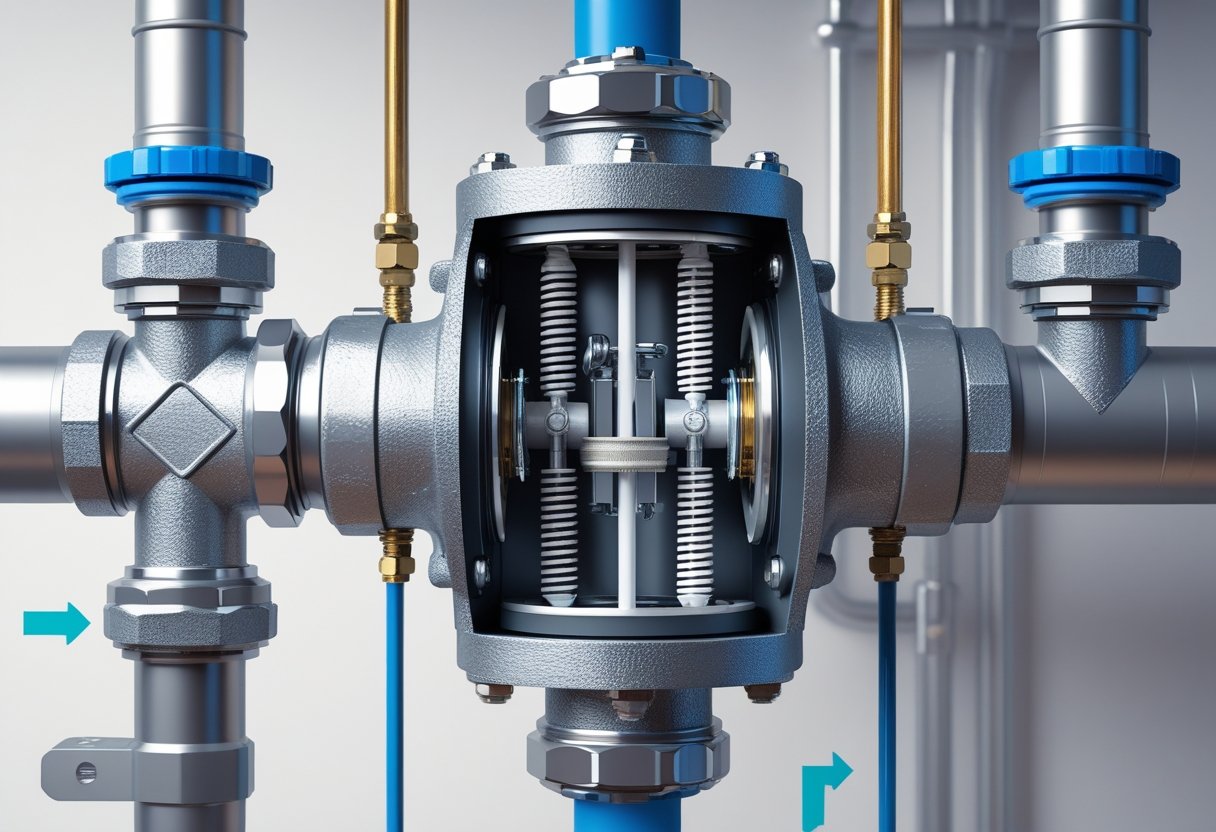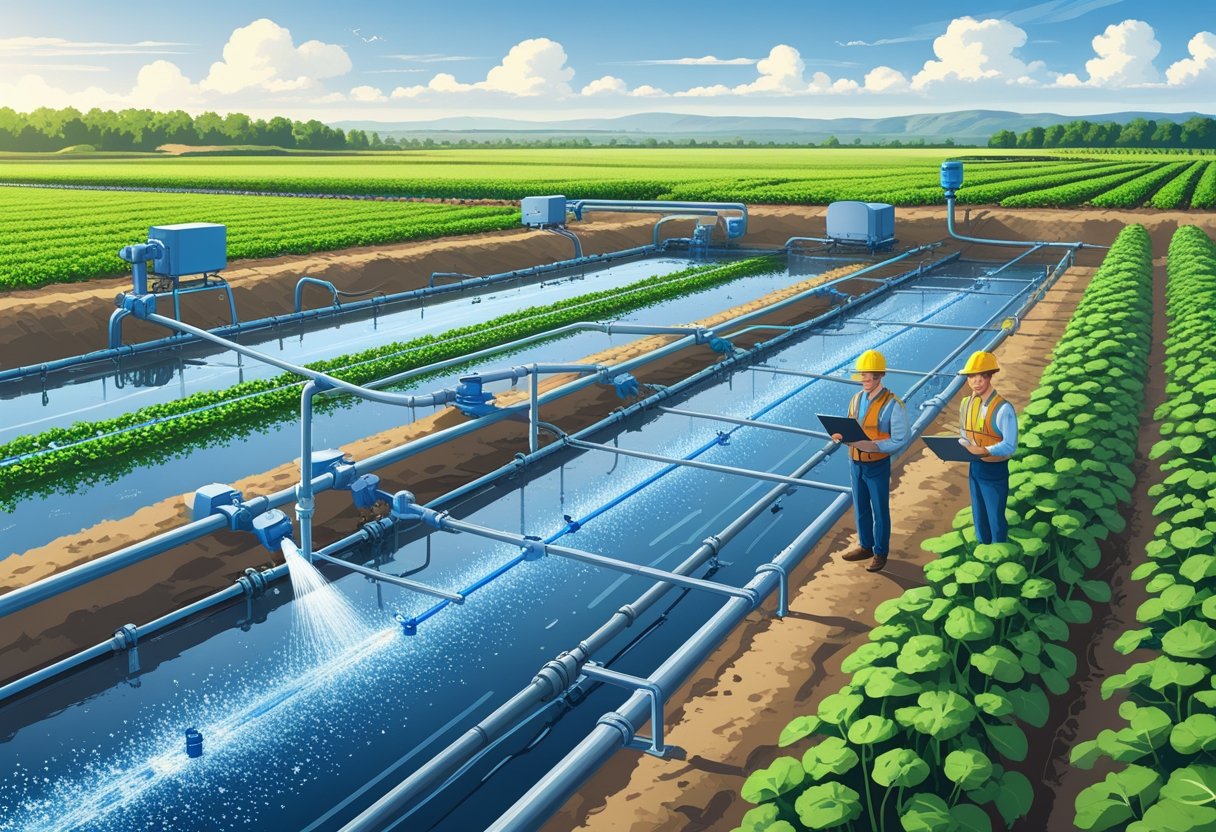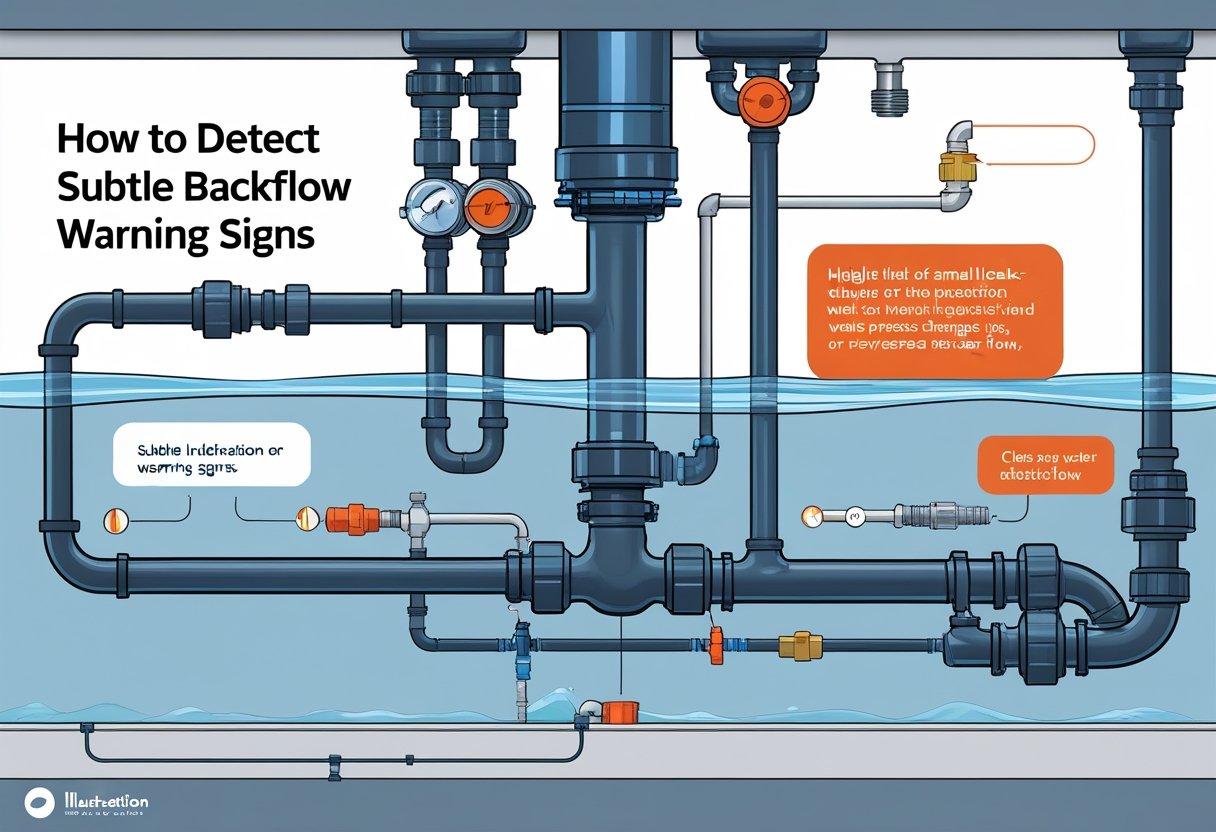A water line backflow preventer is an essential component of any plumbing system, serving to protect your drinking water from contamination. This device ensures that water only flows in one direction, preventing any backflow that could allow pollutants to enter your water supply. Understanding its importance can safeguard not just your health but also the integrity of the community’s water supply.
When installed correctly, a backflow preventer helps maintain compliance with local plumbing codes, which is vital for every homeowner and business owner. Regular maintenance, including annual testing, is key to ensuring these devices are functioning properly. At Pacific Backflow, we specialize in testing, repairing, and installing backflow preventers, ensuring your system remains effective and meets all regulatory standards.
With nearly half a century of experience serving San Diego County, Pacific Backflow is dedicated to protecting your water supply. Trust us to provide reliable and responsive backflow services that not only focus on compliance but also prioritize the safety and well-being of your community.
What Is a Water Line Backflow Preventer?
A water line backflow preventer is essential for protecting your potable water supply. It serves as a critical defense mechanism against the contamination of drinking water due to backflow, which can occur when pressure changes in plumbing systems. This section will cover its definition, key components, and applications in plumbing systems.
Definition and Function
A water line backflow preventer is a specialized plumbing device designed to prevent the reverse flow of water. This mechanism ensures that water only flows in one direction—from the clean water supply into your home or building. Contaminated water is kept from entering the potable water supply, which protects public health and maintains water quality. In plumbing systems, backflow can lead to serious health risks, making these devices crucial.
Key Components
The primary components of a backflow preventer include check valves, relief valves, and air gaps.
- Check Valves: These one-way valves allow water to flow in a designated direction while blocking any backward flow.
- Relief Valves: These valves release excess pressure, helping to maintain a safe operating environment and preventing system failure.
- Air Gaps: These physical breaks between water supply and potential contaminant sources ensure that no backflow can occur under normal conditions.
These components work together to create a reliable backflow prevention device that is essential for maintaining a safe water supply.
Applications in Plumbing Systems
Water line backflow preventers are employed in various plumbing systems to safeguard drinking water from contamination. You will find them in:
- Residential Properties: Ensuring that household water supplies remain uncontaminated.
- Commercial Buildings: Protecting larger systems with diverse water uses, such as irrigation or industrial processes.
- Municipal Water Systems: Implementing robust backflow prevention solutions to serve entire communities.
Proper installation and maintenance are vital for effectiveness. At Pacific Backflow, you can receive expert services for testing, installation, and repairs to keep your systems compliant and functional. With nearly half a century of experience, your water supply can be protected reliably.
How Backflow Occurs and Why Prevention Is Crucial
Backflow can pose significant hazards to your drinking water supply. Understanding how it occurs, its causes, and the associated risks is essential for safeguarding your home's water quality.
Understanding Backflow
Backflow refers to the unintended reversal of water flow in a plumbing system, which often leads to cross-connections. This can occur when the water pressure in your supply line drops, allowing contaminated water from external sources to flow back into your drinking water. Factors like burst pipes, sudden usage changes, or equipment failures can trigger this setting.
Preventing backflow starts with understanding that your drinking water could be at risk from various sources, including landscaping systems and swimming pools. Installing devices designed to prevent backflow is essential for maintaining water quality.
Causes of Backflow
Multiple factors contribute to backflow incidents. One common cause is a drop in water pressure, which can occur due to various reasons such as burst pipes or firefighting activities. This pressure change creates a vacuum that pulls water from secondary sources, leading to contamination.
Cross-connections are another significant cause. These can manifest when irrigation systems, chemical feed systems, or even hoses connected to garden spigots are improperly installed. When these systems' water quality is compromised, it can easily flow back into your main water supply.
Risks of Contaminated Water
Contaminated water poses serious risks, particularly to your health. Backflow can introduce pollutants like chemicals, fertilizers, or biological pathogens into your drinking water. E. coli bacteria, for instance, can thrive in such conditions and lead to serious illness.
Additionally, contaminated water can damage your plumbing infrastructure. If toxic substances flow back into your home, they might corrode pipes and fixtures, leading to costly repairs.
Properly installed backflow preventers are essential for mitigating these risks and ensuring your water supply remains safe and clean.
Health Hazards Linked to Backflow
The health implications of backflow are troubling. Contaminated water may harbor harmful microorganisms that can cause gastrointestinal diseases and other health issues.
Instances of backflow can lead to severe outbreaks, impacting both individuals and communities. The introduction of pathogens like E. coli can result in complications ranging from mild digestive discomfort to more severe muscular and neurological disorders.
To protect your family, it is crucial to regularly test and maintain your backflow prevention devices. Seeking professional help from a trusted provider like Pacific Backflow can ensure your system is functioning correctly and safeguarding your water supply from contamination.
Types of Backflow Preventers for Water Lines
Understanding the various backflow preventers available for water lines is essential for maintaining a safe water supply. Each type serves specific needs and can be crucial for compliance with local regulations.
Atmospheric Vacuum Breakers (AVB)
Atmospheric Vacuum Breakers (AVB) are commonly used in irrigation systems and plumbing fixtures. They work by allowing air to enter the system when there’s a drop in pressure, preventing backflow.
AVBs feature a simple design, which makes them relatively easy to install. This device typically includes a check valve that opens to allow air entry if water pressure falls. Remember, AVBs must be installed at least 6 inches above the highest point of the water line to function correctly.
Regular maintenance is crucial to ensure the effective operation of AVBs. If you need assistance with testing or installation, Pacific Backflow offers reliable services throughout San Diego County.
Pressure Vacuum Breakers (PVB)
Pressure Vacuum Breakers (PVB) provide an advanced form of protection against backflow, especially in high-risk applications. Unlike AVBs, PVBs incorporate a pressure relief valve to maintain a vacuum and prevent pollutants from entering the clean water supply.
When water flows normally, the check valve remains closed. If a drop in water pressure occurs, the relief valve opens to allow air in and prevent backflow. This design ensures that even under varying pressure conditions, your water supply remains protected. Proper installation is essential; PVBs must be placed 12 inches above the highest point in the system.
For those needing service, Pacific Backflow has extensive experience in PVB testing and installation.
Reduced Pressure Zone (RPZ) Assemblies
Reduced Pressure Zone (RPZ) Assemblies are among the most reliable backflow prevention devices, particularly used where potential contamination risks are high. RPZs contain two check valves and a pressure relief valve, providing an added layer of security.
If the pressure drops, the relief valve opens, preventing backflow and maintaining a drop in pressure between the two check valves. This design minimizes the risk of contaminants entering the water supply system, even during extreme conditions.
Proper installation requires placing RPZs above the flood level of the area, and annual testing is necessary to ensure functionality. With Pacific Backflow, you can receive expert assistance for installation and routine testing to keep your system compliant.
Installation and Maintenance of Water Line Backflow Preventers
Installing and maintaining a water line backflow preventer is crucial for ensuring safe drinking water. You must consider the right device, installation options, regular testing, and ongoing maintenance to keep your system effective and compliant.
Choosing the Right Device
Selecting the appropriate backflow preventer is the first step. The choice depends on your water system and local plumbing codes. Common types include reduced pressure zone (RPZ) assemblies, double-check valve assemblies, and atmospheric vacuum breakers.
Evaluate each type based on:
- Water pressure requirements
- Installation location (indoor vs. outdoor)
- Type of contaminants being prevented
Consulting with a licensed plumber can ensure you choose the right model. They can also verify that the device complies with all necessary regulations, providing peace of mind.
Professional vs DIY Installation
You may be tempted to install the backflow preventer yourself, but hiring a professional is often the best choice. A licensed plumber is trained to navigate local regulations and ensure correct installation. They have the expertise to handle any issues that may arise during setup.
DIY installation might save money upfront but can lead to costly mistakes. If the installation violates plumbing codes or doesn't function properly, it could jeopardize your water supply and violate regulations.
Regular Backflow Testing
Annual backflow testing is essential to maintain a safe water supply. This testing checks if your backflow preventer functions correctly and meets local compliance standards. Schedule these tests with a certified provider like Pacific Backflow, which ensures a hassle-free experience.
The process typically includes:
- Inspection of mechanical parts
- Functional testing of the backflow device
- Submission of results to your local water authority
Regular testing can prevent costly repairs and maintain the integrity of your water system.
Routine Maintenance Tips
To ensure your backflow prevention system operates effectively, routine maintenance is key. Here are some essential tips:
- Visual Inspections: Regularly check for physical damage or leaks. Look for signs of corrosion.
- Keep Records: Track maintenance and testing dates. This ensures compliance and helps avoid lapses in care.
- Professional Servicing: Schedule professional inspections at least once a year. They can identify potential issues before they escalate.
- Protective Measures: Install cages or locks to prevent tampering with your backflow device, especially in outdoor settings.
Following these guidelines will help ensure a long-lasting and effective backflow prevention system.
Common Applications and Legal Requirements
Backflow preventers are crucial for maintaining water safety in various applications. Understanding how and where they are implemented can help ensure compliance with local regulations, protecting both public and personal water supplies.
Irrigation and Sprinkler Systems
In irrigation systems, backflow preventers ensure that contaminated water does not re-enter the potable water supply. For example, during fertilization, water mixed with chemicals could potentially flow back into clean sources. Deploying a specific type of backflow device, such as a pressure vacuum breaker or reduced pressure principle device, is often mandated by local and state codes. Regular testing is necessary to ensure these devices function correctly and meet compliance requirements. For assistance with installations or compliance, you can depend on the expertise of Pacific Backflow.
Municipal and Residential Water Lines
Municipal water systems require backflow preventers at connection points to prevent contaminants from entering water mains. This safeguard protects the health of entire communities. In residential settings, homeowners often must install these devices when connecting to a public water supply, particularly if they have irrigation or specialized plumbing systems. Regulations can differ based on local ordinances, making it vital to check with your water district. Certified services, such as those offered by Pacific Backflow, can help maintain compliance through annual inspections and repairs.
Sewer and Wastewater Protection
Backflow preventers are essential in preventing sewer and wastewater from flowing back into drinking water supplies. These devices are usually required in systems connected to sewer pipes, especially in flood-prone areas. Practicing good maintenance and complying with legal requirements helps to ensure the integrity of your water system. Regular inspections and testing can prevent costly damage and health hazards. Installing a high-quality backflow prevention system is an investment in your community’s safety and well-being. A reliable partner can aid in this process to guarantee compliance and functionality.
Frequently Asked Questions
Understanding backflow preventers is essential for maintaining safe water supply systems. Here are common inquiries regarding their functionality, installation, maintenance, and more.
How does a residential backflow preventer work?
A residential backflow preventer functions by establishing a physical barrier that stops contaminated water from reversing its flow into the clean water supply. It typically operates using check valves or other mechanisms that open in one direction, allowing water to flow toward your home while preventing backflow.
What are the installation requirements for a backflow valve in a water line?
Installation requirements can vary based on local regulations and water district codes. Generally, a backflow valve must be installed at a certain distance from any potential contaminant sources, such as irrigation systems or chemical storage areas. It's crucial to follow these guidelines to ensure compliance and protect your water supply.
How often should a sewer backflow preventer be tested or maintained?
Testing and maintenance of a sewer backflow preventer should be conducted at least once a year. Regular testing ensures that the device is functioning correctly and meets local safety regulations. Pacific Backflow offers reliable testing services to help you stay compliant.
What are the differences between a sprinkler system backflow preventer and a commercial backflow preventer?
A sprinkler system backflow preventer is typically designed for lower pressure applications and may use specific mechanisms suitable for irrigation systems. In contrast, a commercial backflow preventer is built to handle higher flows and pressures, often featuring more robust construction and multiple check valves to manage larger water volumes effectively.
Are PVC backflow preventers suitable for all climates and water systems?
PVC backflow preventers are generally resistant to corrosion and suitable for various applications. However, extreme temperatures can affect their performance, leading to possible cracking or leakage. It's important to evaluate your local climate and water conditions to determine if a PVC backflow preventer is appropriate.
Can a backflow preventer valve also reduce water pressure or flow in my home's plumbing?
Yes, a backflow preventer can cause a reduction in water pressure or flow, particularly if it becomes clogged or fails. Proper installation and regular maintenance by professionals, like those at Pacific Backflow, can help mitigate these issues and ensure optimal performance of your plumbing system.











